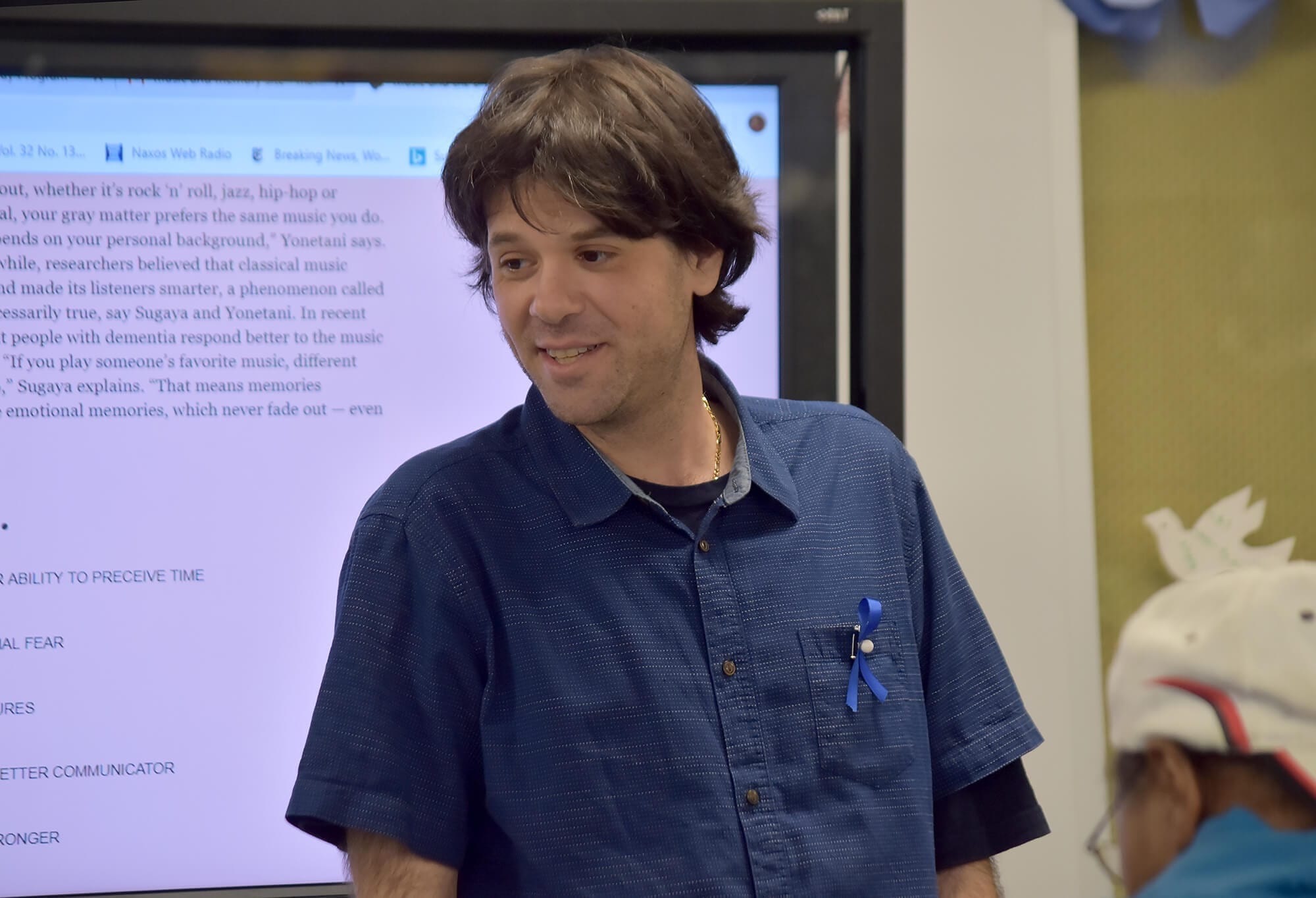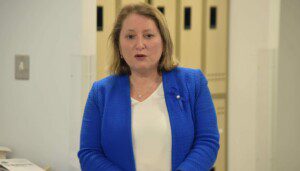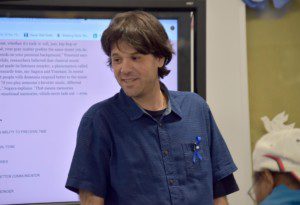AHRC New York City’s Brooklyn TBI program held its third annual Brain Injury Awareness Day seminar on Thursday, March 28, at the program’s recently-opened facility on Church Avenue. The seminar consisted of informative lectures from AHRC NYC medical professionals, Brooklyn TBI staff members, and personal reflections from people who have suffered a traumatic brain injury.
Sevdzhan Adem, Program Director for Church Ave Day Services and Brooklyn TBI, began the event by citing a number of statistics about TBIs. In 2013, 2.8 million TBIs were recorded in the United States, of which 53,000 were fatal. Between 3.2 million and 3.5 million people live with a TBI, requiring a varying degree of support. The average lifetime cost of care for someone who has suffered a TBI is $400,000.
“It is especially important to protect ourselves when doing physical activities such as riding bikes to prevent brain injuries,” said Sevdzhan. “Finally, thanks to all of our CSPs for preparing today’s event, for taking initiative, and for having these presentations for us today.” Sevdzhan encouraged guests to purchase handmade crafts created at the TBI program, proceeds of which would go towards a scholarship program for people with TBIs.
Brain Gains
Magdalena Schmidt, a Registered Nurse with Day Services, presented the eight dimensions of wellness: emotional, environmental, financial, intellectual, occupational, physical, social, and spiritual. “Mental health and physical health are linked,” she explained. “Wellness doesn’t mean that you’re never sick or stressed out. You can be chronically ill or living with the effects of brain injury for instance, and still strive to be as well as you can be. Health is a spectrum. Sometimes we are not as healthy we can be and sometimes we are choosing behaviors that boost our wellness.”
Edna Quiaem, a Nutritionist, built on Magdalena’s presentation by speaking about the foods, drinks, and nutrients one needs for a healthy brain. Elements of a diet that’s good for the brain included fruits such as blueberries, meals that are high in protein and rich in vitamins and minerals such as fatty fish, and dark chocolate for its antioxidant and endorphin-boosting properties.
“Our brain is the central control of the body—it allows us to move to think, to keep your heart beating and your lungs breathing,” Edna said. “A healthy diet is essential to maximizing your brain’s potential.”
Jared Levin, Community Support Professional, showed a couple of videos demonstrating how music is beneficial to the brain, especially in patients suffering from dementia and other memory-loss-related diseases and injuries. “Memories associated with music are emotional memories. Remembering a song might bring back a sense or a vision of somebody. Three seconds of a song will take me back to a lunch table in pre-kindergarten.” Jared runs a music group at Brooklyn TBI that reinforces these teachings.
Finally, Jan Wollney from the Brain Injury Association of New York State (BIANYS) encouraged everyone to become involved with their local BIANYS chapter. “What we try to do is encourage people to come on out and help us form a community of people who have similar brain injuries. We like to walk away remembering that we have an active chapter. We’re all on the same page. We’re looking to keep active, keep involved and build community wherever we can.”





